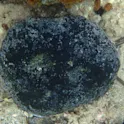Caution, ocelot crossing: special wildlife exits on busy roads help protect endangered cat
By Mischa Dijkstra, Frontiers science writer Texas ocelot, Leopardus pardalis albescens. Image credit: Kline Lab, University of Texas Rio Grande Valley Traffic collisions are a major cause of death of endangered Texas ocelots. Researchers have now shown that recently designed wildlife exits, meant to allow ocelots to leave highways surrounded by fences, function as they are designed to do. 10 mammal species apart from ocelots learned to use them correctly. The authors concluded that these exits are a useful conservation measure in Texas, not only for ocelots. The Texas ocelot (Leopardus pardalis albescens) is endangered due to historic hunting, habitat loss, inbreeding, and traffic collisions. Today, only between 50 and 80 ocelots remain in the US, exclusively in Willacy and Cameron counties in southern Texas. These two populations are isolated from the larger one in northwestern Mexico by highways and urban development. “Here we show that a range of species, including middle-sized carnivores such as bobcats and coyotes, successfully use wildlife exits, a new type of mitigation structure specifically designed for the US endangered ocelot,” said first author Zarina Sheikh, a former graduate student at the University of Texas Rio Grande Valley, about their new study in Frontiers in Ecology […]














